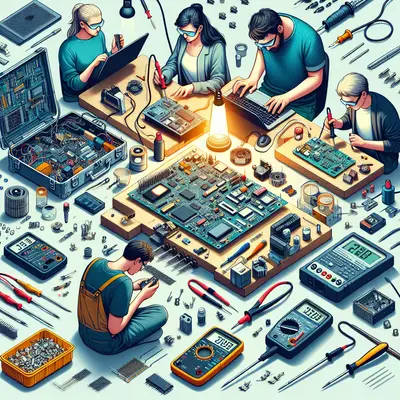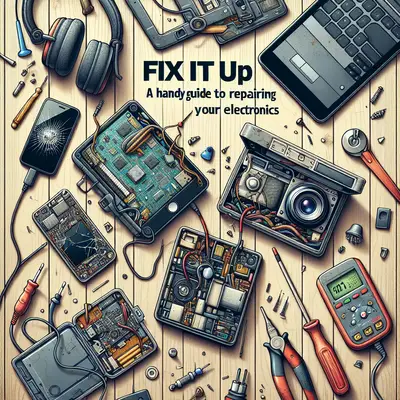In a world where we're surrounded by electronic devices, it's not uncommon to encounter a gadget that's acting up or has flat-out stopped working. But before you head to the nearest repair shop or decide to replace the device, consider a DIY repair. With a little knowledge and the right tools, you can often fix the problem yourself. Here are five practical tips to help you repair your electronic devices at home.
1. Diagnose the Problem
Before you can fix a device, you need to understand what's wrong with it. Is it not turning on at all, or is it just not functioning as expected? Use the internet to research common problems with your specific device and their solutions. User forums, tutorials, and how-to videos can be a goldmine of information.
2. Gather Your Tools
A proper set of tools is crucial for electronics repair. A basic kit should include a set of precision screwdrivers, a multimeter for diagnosing electrical issues, and a soldering iron for repairing broken connections. Remember to always use ESD-safe tools to prevent damaging sensitive components with static electricity.
3. Safety First
Working with electronics comes with its own set of hazards. Always ensure your device is unplugged or powered off before you start working on it. If you're dealing with a device that has a large capacitor (like a CRT television or a camera flash), make sure it's discharged first to avoid a dangerous shock.
4. Be Organized
Keeping track of all the tiny screws and components can be a real challenge. Use a magnetic project mat to keep screws from rolling away and draw a rough diagram of where everything goes. Take photos as you disassemble the device to help you remember how it all fits back together.
5. Know When To Seek Professional Help
Some electronics repairs can be done easily at home, but others should be left to professionals. If you're not confident in your ability to fix the problem, or if your device is still under warranty, it's often better to seek professional help.
Conclusion
With these practical tips, you're well on your way to becoming a DIY electronics repair guru. Remember, the key to successful DIY repair is patience, careful research, and a good set of tools. Happy repairing!



